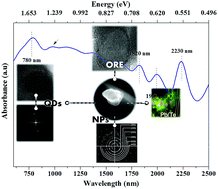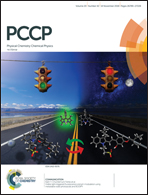The mechanochemical synthesis of PbTe nanostructures: following the Ostwald ripening effect during milling
Abstract
A fundamental understanding of the Ostwald ripening effect (ORE) during the mechanochemical synthesis of PbTe nanostructures is presented. The ripening process involves the coarsening of larger particles from those of smaller size; this phenomenon was systematically evaluated at different stages of milling by microscopy analyses (AFM, TEM, STEM and HRTEM). At the early stage of milling, smaller particles and quantum dots are eventually dissolved to lower the total energy assciated with their surfaces. The ripening process – during milling – involves short-range mass transfer among particles. HRTEM analyses allowed us to identify that coarsening occurs by thermo-mechanically activated cooperative mechanisms. The detachment of the atoms from smaller particles to form bigger ones plays a major role in the particle coarsening. It was found that the coarsening process was not limited to crystalline nanostructures; so grain boundaries, edge dislocations and boundaries among crystalline and amorphous phases also play an important role to determine how species migration contributes to generate coarse particles. Those serve as sites for inducing coarsening in an equivalent way as surfaces do. Secondary ion mass spectrometry and elemental chemical mapping (EDX-STEM) revealed that both the purity and the chemical homogeneity of the PbTe nanostructures are prominent features of this material. Additionally, a direct band gap enhancement (780 nm) compared to bulk PbTe (3859 nm) was detected. It occurred due to the quantum confinement effect, lattice imperfections and even surface properties of the nanostructures. It is important to point out that the whole optical behaviour of the PbTe nanostructures was dependent upon the embedded nanoparticles and quantum dots in the clusters and coarse particles ranging from 15 nm to 35 nm.



 Please wait while we load your content...
Please wait while we load your content...